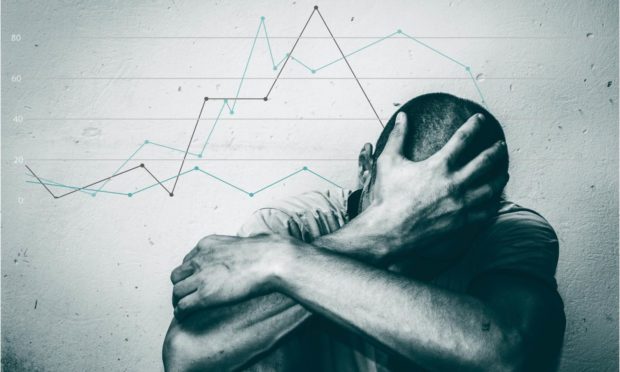Newly released data from the National Records of Scotland begin to show the mental health toll of the pandemic.
In 2020, 805 people lost their lives to suicide in Scotland.
Greater than than 70%.
Despite some expectations, the number of males lost to suicide decreased in 2020.
However the number in females increased to the highest level seen since 2011.
Suicide rates in the north and north-east
In the north and north-east, a fall in the suicide rate in 2020 compared to 2019 was seen in Highland, Moray and Aberdeenshire.
Meanwhile, Orkney Islands, Western Isles, Shetland Islands and Aberdeen all saw a rise in its rate compared to 2019.
Across Scotland in 2020, Clackmannanshire recorded the highest rate of suicide per local authority, at 23.4 deaths per 100,000 residents. It is followed closely by the Dundee City council area, at 22.8.
This is a change from 2019, when the Highlands recorded the highest rate of suicides, at 28.4 deaths per 100,000 residents.
Has the coronavirus pandemic had an impact on suicide rates?
Since 2010, 7688 deaths due to intentional self harm have been registered in Scotland – peaking in 1993, where 912 deaths were reported as a result of suicide.
Over the years the rate has continued to fluctuate, falling sharply from 2011 to 2015 from 889 to 672 deaths, although it began to rise again over the past few years.
In 2020, the number of deaths fell compared to 2019.
Statistics provided by the National Records of Scotland show that deaths initially dropped in the first month of the coronavirus pandemic, falling from 65 deaths in March to 49 in April.
However, it began to rise again in May and June, before staying steady until October.
With the exception of three months, deaths were either higher, or consistent with the 2015-2019 average.
Pete Whitehouse, director of statistical services at National Records Scotland, said: “Suicide deaths decreased slightly on the 2019 level. Monthly figures show that suicide deaths between June and September of 2020 were consistently above the highest numbers seen in these months over the last 5 years.”
Does age play a part?
The highest number of suicides are consistently recorded in age groups between 20 and 59.
Since 2014, the number of suicides reported have been increasing in the 30-39 age category, which has recorded the highest suicide rate in 2020.
The rate of deaths among 40-49 year-olds has also trended upwards since 2007, and in 2020 this group recorded the second highest rate.
The rate of suicides among 20-29 year-olds fell from 19.5 per 100,000 in 2019 to 16.7 in 2020.
Whatever you’re going through, you can call Samaritans free any time on 116 123 or email: jo@samaritans.org or visit www.samaritans.org to find details of your nearest branch.
